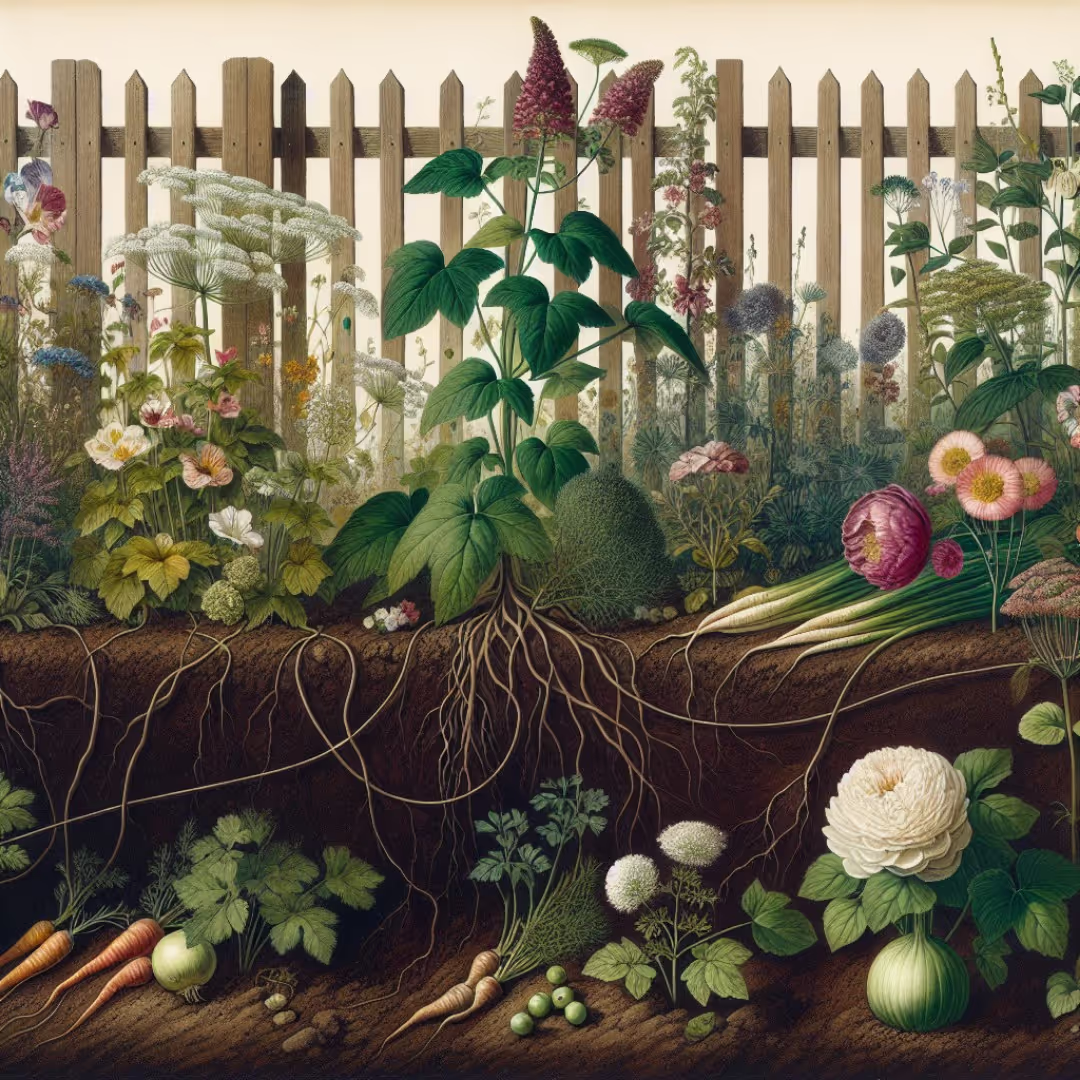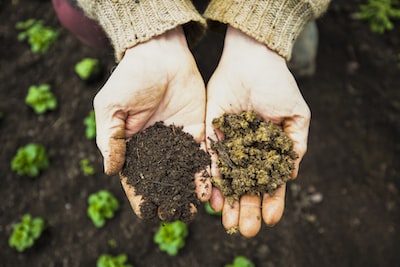DYI garden bed

DIY garden bed
Building a DIY garden bed means less bending, fewer weeds, and better soil drainage. Choose lumber or repurpose old wood pallets, lay down landscaping fabric to deter weeds, and fill your DIY garden bed with quality compost-rich soil. Follow along below for clear pointers on setting up your own thriving bed—you'll reap delicious, homegrown veggies and fragrant herbs season after season.
Cheatsheet: Quick Guide to Building Raised Beds
🪵 Materials
- Rot-resistant wood (cedar, redwood, or heat-treated pine) or composite boards
- Galvanized screws (7–8 cm / 2.75–3.15 in)
- Cardboard or landscape fabric
- High-quality soil (blend compost, topsoil, sand)
- Mulch (optional)
🔧 Tools and products you'll need
- Cordless drill or screwdriver
- Measuring tape
- Carpenter’s square
- Shovel or wheelbarrow
- Saw (if cutting boards yourself)
- Work gloves
📏 Size & Shape
- 4x8 ft (1.2x2.4 m) fits most yards, reaches center from both sides
- Depth: 12–18 in (30–45 cm) supports deep roots
- Allow 18 in (45 cm) between beds for easy access
🏡 Assembly Steps
- Mark layout: Place stakes & string for straight edges
- Prepare site: Remove sod, level ground
- Lay base: Cover area with cardboard or landscape fabric for weed block
- Assemble frame: Screw boards together at corners, keep sides square
- Position bed: Set assembled frame on prepared spot
- Fill: Add soil mix to within 2 in (5 cm) of top
- Water to settle soil
🌱 Grow Smarter
- Yields up to 4x more per ft² (0.09 m²) than row gardening
- Soil warms faster: up to 2 weeks sooner for spring sowing
- Less soil compaction supports healthier root growth
- Raise produce nutrients: healthy soil = tastier, nutritious crops
- Supports self-sufficiency and pesticide-free harvests
I built my first DIY garden bed after losing tomatoes to cold, sticky clay in spring. The bed warmed earlier by a good 5 to 10 F, about 3 to 6 C, and the plants repaid the favor with heavy clusters of fruit.
Raised soil breathes, drains, and stays workable after rain. It also corrals fertility where roots can find it.
Keep bed width to 4 feet, or about 1.2 meters, so you can reach the center without stepping in. Length is flexible, though 8 feet or 2.4 meters fits standard lumber and drip lines.
Leave 18 to 24 inches of path, 45 to 60 cm, for a wheelbarrow and a wet spring boot. On slopes, terrace beds level, since water will pool at the low side and drown roots.
- Galvanized steel panels: 10 to 20 year life, quick to bolt together, sleek look. Choose thicker panels around 0.6 to 1.0 mm or 22 to 26 gauge to avoid oil-canning in heat.
- Western red cedar or redwood: naturally rot resistant, 8 to 15 years, smells like a sawmill after rain. Costs more but screws like butter.
- Pressure-treated pine: modern treatments like ACQ or CA-B have replaced CCA for residential use, and many university extensions consider them acceptable for edibles when paired with a liner. I use a food-safe barrier if soil will touch the inner face.
- Composite boards: long life, straight, no splinters, moderate bow under load. Heavier and pricier at the start.
- Untreated pine or fir: budget choice, 3 to 6 years. Paint the outside face with linseed oil for a little extra time.
- Concrete block or brick: permanent, absorbs and releases heat, good for herbs. Add caps to keep water out of block cores.
- Logs: free if you have a chainsaw, rustic, can invite borers. Peels and fungus add character over time.
For edibles near toddlers or pets, I avoid reclaimed timbers unless I know the source. Mystery stains belong at the dump, not near carrots.
“CCA products were discontinued for residential uses in 2003.” EPA
That shift matters for a DIY garden bed built from pressure-treated lumber. If I use it, I staple in a heavy-duty liner and keep irrigation directed at the soil, not the wood.
Go 10 to 12 inches deep, 25 to 30 cm, for most crops, and 16 inches, 40 cm, for carrots, parsnips, and big cabbages. Face long sides north to south for even sun on tall crops.
A bed warms ahead of native ground because air reaches more surface area. That early heat can shave a week off spring waiting, which feels like getting bumped to the front of the line at a crowded bakery.
“For every 1 percent increase in soil organic matter, soil can hold about 20,000 gallons of additional water per acre.” USDA NRCS
Translation for one bed: organic matter cuts swings between flood and drought. That steadiness keeps lettuces sweet and tomatoes from splitting.
- Square it. Mark a 4 by 8 foot rectangle, 1.2 by 2.4 meters, with stakes and string, and check corner diagonals match.
- Deal with pests. Lay 1 by 1 inch or 1 by 0.5 inch hardware cloth, 25 by 25 mm or 25 by 13 mm mesh, to block gophers and voles, then pin with landscape staples.
- Assemble the frame. Cut boards to length, predrill, and screw into exterior corner brackets or simple butt joints with deck screws.
- Level and anchor. Set the frame, shim low spots with soil, and drive a stake inside each corner to resist bowing.
- Line as needed. Add a breathable geotextile on sides if using pressure-treated or steel and you want zero soil contact.
- Fill and mix. Blend 40 percent screened topsoil, 40 percent finished compost, 20 percent coarse mineral like sharp sand or pine bark fines for structure.
- Charge the soil. Add 2 to 3 pounds per 100 square feet, 1 to 1.5 kg per 9 square meters, of a balanced organic fertilizer, and a dusting of rock phosphate if your soil test shows low P.
- Mulch and water. Top with 2 inches, 5 cm, of chopped leaves or straw, then soak until water drips from the bed edges.
A standard 4 by 8 by 12 inch bed holds 32 cubic feet of mix, about 0.9 cubic meters. That is roughly twenty-one 1.5 cubic foot bags if you buy bagged materials.
- All-purpose: 50 percent screened topsoil, 30 percent compost, 20 percent coarse sand or bark fines.
- Root crops: 40 percent topsoil, 40 percent compost, 20 percent washed sand for smooth carrots.
- High organic: 33 percent peat or coco coir, 33 percent compost, 33 percent vermiculite, then add trace minerals and lime as needed after a pH test.
I prefer compost that hits 131 to 170 F, 55 to 77 C, for several days, which the US Composting Council outlines for pathogen kill. Bag labels that list input materials and a STA certification mark make life easier.
Drop in a 1 by 2 cm mainline and two runs of 15 to 17 mm dripline with 0.6 to 1.0 gph emitters, spaced 12 inches or 30 cm. In heat, I run 20 to 30 minutes early morning, then check soil with my fingers, not guesswork.
A simple battery timer pays for itself in one season of cucumbers. Overhead irrigation invites foliar disease on tomatoes, so I keep leaves dry.
- Low hoops: PEX or EMT conduit bent to width, covered with frost cloth for a 2 to 6 F bump, 1 to 3 C, against light frosts.
- Insect netting: lightweight mesh stops cabbage white butterflies and leaf miners without sprays.
- Shade cloth: 30 percent density over lettuce in July keeps it sweet and upright.
I clip covers to screw eyes along the rim, so gusts do not fling them down the block. Wind finds every shortcut in spring.
- Building wider than 1.2 m so I had to kneel on soil and compact the root zone.
- Filling with pure compost, which slumped and went hydrophobic in August.
- Skipping a pest mesh in gopher country, then watching beets vanish overnight.
- Using fresh manure, which pushed lush leaves and bitter flavors.
- Letting mulch touch wooden boards, which wicked moisture into the grain and shortened life.
Plants forgive, wood does not. Measure twice, then buy better screws than you think you need.
I plant tall crops on the north side so they do not shade the rest. I grid the bed into 12 inch, 30 cm, squares with twine for consistent spacing and less overplanting.
Rotation by family keeps soil from getting tired. Brassicas follow legumes, then roots, then fruiting crops, and I top-dress compost between each cycle.
Modern pressure-treated wood without CCA is widely used in vegetable beds and university extensions like Minnesota and Washington State provide guidance on liners and soil contact. If that still worries you, choose cedar or steel and skip the debate.
Galvanized steel holds up well in neutral soils. If your mix runs acidic, keep the soil off bare cut edges with a geotextile strip.
- Lumber or panels: 60 to 250 USD or 55 to 230 EUR per 4 by 8 by 12 inch bed depending on material grade.
- Soil and compost: 90 to 180 USD or 85 to 170 EUR if bagged, half if you buy in bulk by the cubic yard, 0.76 m³.
- Hardware: 25 to 60 USD or 23 to 55 EUR for screws, corner brackets, and stakes.
- Drip kit: 40 to 120 USD or 37 to 110 EUR including a simple timer.
Look for stainless or ceramic-coated deck screws to beat rust. For steel beds, pick panels with rolled top edges that do not chew sleeves.
- Best for speed: Modular galvanized bed kits with tool-free bolts and rolled edges.
- Best for longevity: Thick cedar with corner posts and carriage bolts.
- Best budget: Untreated pine with interior stakes and a natural oil finish on the outside.
- Best rental-friendly: Fabric raised bed planters you can empty and fold flat in winter.
- Best small space: 2 by 6 foot, 0.6 by 1.8 meter, bed tucked along a fence with trellis clips.
- Best cold climate: Deep 16 inch, 40 cm, bed with black-painted interior faces for faster spring warmup.
- Best low-labor soil: Bulk topsoil plus compost delivered and blended with a rake right in the frame.
Kits save time but check panel thickness and fastener quality before you buy. Cheap hardware makes a grown adult mutter by August.
I feed the soil, not the plant. Spring gets a balanced organic fertilizer and a sprinkle of kelp meal, midseason gets 1 inch, 2.5 cm, of compost as a side-dress, and fall gets cover crops like oats and peas.
Soil tests keep me honest. University labs are inexpensive and beat guessing with a bag of lime in one hand and regret in the other.
Kill turf under the frame by scalping with a spade, then lining with cardboard overlapped by 6 inches, 15 cm. Cardboard breaks down after a season and feeds worms.
I mulch bare soil immediately after planting. Light never reaches the seed bank, and weeds sulk in the dark.
Extension publications from Florida, Minnesota, and Oregon note that raised beds often yield more per square foot thanks to improved drainage, warmer spring soils, and tight spacing. In my plots, that has meant two extra pickings of bush beans and fewer slug parties after summer storms.
Plant health tracks airflow and soil structure more than gadgetry. A good DIY garden bed gives you both in a tidy rectangle.
Volume in cubic feet equals length times width times depth in feet, and 27 cubic feet equals 1 cubic yard, 0.76 m³. Buy bulk if you are filling more than two beds and you have a tarp and strong back.
- Corner braces stop spreading when soil is wet and heavy.
- Trellis clips on the north rim turn peas and cucumbers into vertical snacks.
- Edge cap on block or steel saves forearms and looks finished.
I treat soil like a good stock. Start with clean ingredients, simmer patience, and refuse to scorch it with neglect.
- USDA Natural Resources Conservation Service, soil organic matter and water holding data.
- EPA statements on the residential phase-out of CCA-treated wood in 2003.
- Royal Horticultural Society guidance on bed width and access.
- University extensions, including Minnesota, Washington State, and Florida IFAS, on raised bed design, yields, and materials.
I cross-check recommendations each spring, since product formulations and local advisories shift. Gardens thrive on observation backed by solid references.

Want smarter plant choices? 🪴
Frequently Asked Questions About Building Your Own Garden Bed
What materials best suit a homemade raised garden?
Materials like untreated cedar, redwood, and food-grade composite lumber resist decay and safely frame edible garden plots. Avoid chemically treated wood to protect your plants and maintain soil health.
How deep should a raised garden structure be for vegetables?
A depth between 12-18 inches (30-45 cm) creates ample space for root growth of typical vegetables and herbs. Root crops, however, thrive at greater depths around 18-24 inches (45-60 cm) to maximize growth potential.
Should I line the bottom of the garden box?
Lining the base with permeable materials like landscaping fabric or cardboard can reduce weed invasion. Avoid plastic, as soil drainage remains essential for plant health.
What soil mix works well for raised garden planting?
A blend of equal parts garden soil, compost, and peat moss or coconut coir ensures excellent drainage, fosters nutrients, and optimizes plant growth.
How often should the soil of my raised garden be replenished?
Each growing season, add a few inches (5-7 cm) of fresh compost or nutrient-rich organic matter. This refreshes nutrients absorbed by previous plantings, promoting vigorous growth year after year.
Does a garden box require drainage holes?
Good drainage is essential. Rather than holes in a wooden structure, it is best practice to leave the base open and place the bed directly onto bare earth. This method ensures excess water freely drains, preventing root rot.
Can garden beds be constructed directly over grass?
Yes, construct directly over grass by first laying down cardboard or newspaper sheets to smother existing vegetation. The grass breaks down over time, enriching the soil beneath your raised bed.
Building your own DIY garden bed isn’t about chasing perfection—it’s about getting your hands dirty and growing something real. The secret is in the details: good soil, the right location, and a sturdy frame. Don’t overthink it. Start with what you have, and let the process teach you. The rewards are fresh air, honest food, and a patch of earth that’s yours. If you want to level up, check out this guide to the latest innovations in vegetable gardening or dig into composting for richer soil. A DIY garden bed is simple, but the payoff is real—just plant, tend, and let nature do the heavy lifting.
Health Benefits of Growing Food in Raised Garden Beds
Reduce Physical Strain
- Higher beds (about 24-30 inches / 60-75 cm tall) minimize bending, protecting back and knees.
- Position beds at waist-level to improve accessibility and comfort during planting and harvesting.
Boost Vegetable Nutrition Levels
- Enrich soil organically to increase nutrients like Vitamin C and antioxidants in leafy greens and root vegetables.
- Rotation-friendly raised beds prevent nutrient-depletion common in ground-level gardens, promoting healthier produce.
Lower Your Exposure to Toxins
- Custom soil mix ensures lower contaminants than garden soil, decreasing heavy metals absorbed by edible crops by up to 60%.
- Use untreated lumber or food-safe, recycled plastic to eliminate chemical leaching into produce.
Enhance Mental Health through Gardening
- Consistent gardening relieves stress; notably reduces cortisol (stress hormone) levels, improving mood.
- Daily outdoor activity in sunlight increases Vitamin D levels vital for bone density and immune health.
Encourage Increased Vegetable Intake
- Household gardeners consume nearly 40% more vegetables daily compared to non-gardeners, directly promoting healthier diets.
- Harvesting fresh produce at home motivates healthier meal preparation habits.
Find out which plants will thrive in your garden!
Answer a few fun questions and get custom plant recommendations perfect for your space. Let’s grow something amazing together!

start your season





